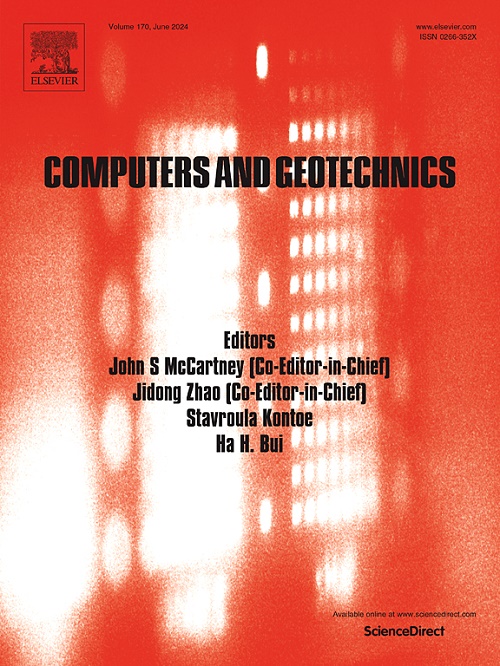Excavation damage mechanism of deep buried layered fractured rock mass based on three-dimensional bonded block damage model
IF 5.3
1区 工程技术
Q1 COMPUTER SCIENCE, INTERDISCIPLINARY APPLICATIONS
引用次数: 0
Abstract
Under complex mineralization, the geological environment of deep mining projects is often accompanied by fractured rock masses. The existence of structural planes and cracks control the mechanical behavior of fractured rock masses. To describe the mechanical response mechanism of deep buried fractured rock mass, a three-dimensional bonded block damage constitutive model (BBDM) is proposed in this paper. Based on the damage characteristics of rock mass, the model will degrade the tensile strength, cohesion, dilation angle, normal and shear stiffness parameters of the joint based on the fracture energy value when the joint is in tension and shear yield state, and make the model eventually degenerate into a pure friction Mohr-Coulomb model under zero cohesion. Meanwhile, taking a deep buried roadway excavation project as the research background, the 610 m main slope excavation process is simulated by using the BBDM. Combined with the field test results, the stress, displacement and joint damage law of the surrounding rock excavation process are analyzed. The results show that in the closer position to the side wall, the potential interlayer fracture damage is larger, and the damage mechanism is mainly tensile damage. With the increase of the distance from the side wall, the damage degree gradually decreases, and the damage mechanism becomes mainly compressive shear damage, and eventually transitions to the state of no damage to the cracks. The research results reveal the damage process and failure mechanism of interlayer fracture in fractured rock bodies, which deepens the understanding of the mechanical response of deeply buried fractured rock masses and is significant for ensuring the stability of surrounding rocks and the safe and efficient production of the mining area.
求助全文
约1分钟内获得全文
求助全文
来源期刊

Computers and Geotechnics
地学-地球科学综合
CiteScore
9.10
自引率
15.10%
发文量
438
审稿时长
45 days
期刊介绍:
The use of computers is firmly established in geotechnical engineering and continues to grow rapidly in both engineering practice and academe. The development of advanced numerical techniques and constitutive modeling, in conjunction with rapid developments in computer hardware, enables problems to be tackled that were unthinkable even a few years ago. Computers and Geotechnics provides an up-to-date reference for engineers and researchers engaged in computer aided analysis and research in geotechnical engineering. The journal is intended for an expeditious dissemination of advanced computer applications across a broad range of geotechnical topics. Contributions on advances in numerical algorithms, computer implementation of new constitutive models and probabilistic methods are especially encouraged.
 求助内容:
求助内容: 应助结果提醒方式:
应助结果提醒方式:


